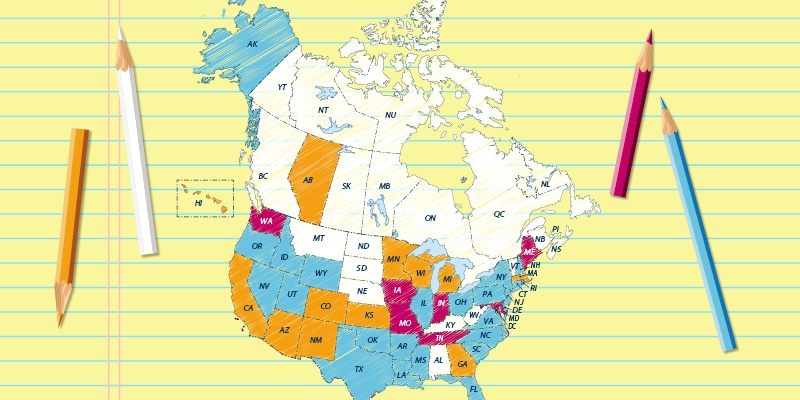A Primer on Charter Schools

Charter schools are autonomous public schools that provide innovative or enhanced education programs designed to improve student learning. Operating outside of local school boards and governed by their own board of trustees, they are accountable for pursuing and meeting their charter. Typically exempt from many statutes and regulations that govern traditional public schools, they are not required to hire unionized teachers and may use non-traditional pedagogy or curriculum. They do not charge tuition and are typically fully funded for operational expenses.
The idea of schools by charter, although discussed in the 1970s, was robustly proposed in 1988, with the first American state (Minnesota) passing charter school law in 1991. Growth in the numbers of states allowing charter schools has been strong in the US, with the period from 1994 to 1999 showing fast-paced growth. In 1994, 11 states had passed charter school legislation, and by 1999 fully 36 states (including DC) allowed charter schools. By 2015 a total of 43 US educational jurisdictions allowed charter schools.
The number of students attending charter schools in the US has grown dramatically. From 1999/00 to 2012/13 the number of students enrolled in charter schools grew almost seven-fold, from about 340,000 students to nearly 2.27 million. Fully 4.4 percent of the student population (in states that allow charter schools) attends a charter school. Although in Washington, DC, almost 46 percent of students attend charter schools, the state with the next highest percentage of students enrolled is Arizona, at 12.8 percent.
Growth in Canada has been much more stagnant. Only one province—Alberta—introduced charter school legislation, in 1994. Provision for 15 charters was created. To date, no other Canadian province has been added to the list of jurisdictions allowing charter schools and the cap on numbers of charters remains at 15 in Alberta.
Student enrolment in Alberta has quadrupled and indicators exist that wait lists are common, even substantial in several instances. Nevertheless, the numbers of students attending charter schools in Alberta are modest with 2,073 students enrolled in 1999/00 and 8,418 in 2012/13. Only 1.4 percent of Alberta students were enrolled in charter schools in 2012/13.
The research on charter schools in the US shows that they are particularly effective in improving student performance for those students who are underserved by traditional public schools. Leading studies show performance improvements for students disadvantaged by poverty, from an ethnic minority group, or with low baseline entering scores.
Charter schools also showed positive effects for students who gained access to an over-subscribed charter school by winning a lottery. That said, charter schools vary widely from one another and not all showed improved student performance effects. The charter school advantage was found for schools with certain characteristics: urban, an academic focus, a disciplined approach, longer school days or school years, and open for more years (maturation/vintage effect).
In Alberta, charter schools were originally intended, in 1994, to provide choice and competition in the education sector, and to inject more diversification in the education market. Today they are expected to serve as pilot sites and incubators of research and finely-tuned innovative practices. Currently 13 charter schools are in operation, spread over 20 campuses with mandates that vary from one to another including “direct instruction” schools, schools for gifted students, English language learners, and those based on arts, music, science, culture, personalized learning, single gender (girls), or at-risk youth.
A total of 44 studies on charter schools in Alberta were identified and reviewed for this paper. While the research shows that the schools are innovative in their delivery of education, it was surprising that investigations of charter school effects on improvements in student achievement was not more common. Still, taken together, the studies showed that charter schools in Alberta “provide enhanced student learning outcomes.” The research found enhanced scores, higher rankings, and more benchmark achievement for charter students than for their counterparts, usually after controlling for socio-economic differences. Furthermore, charter schools were found to provide more choice for parents and students, and evidence exists that, particularly in some school districts, they exert positive competitive pressure on area schools.
Thus, although the expansion of charter schools has been tightly controlled in Alberta, they have earned a strong presence in the public education landscape. The vast majority of US states have now passed charter school legislation and enrolments have grown markedly in that country. Research from the US, and in a more limited way, from Canada, shows that charter schools offer enhanced student outcomes, particularly for some disadvantaged groups of students. As such, they are worthy of attention.





